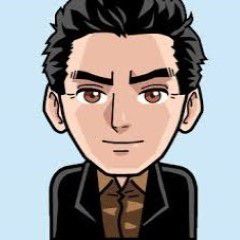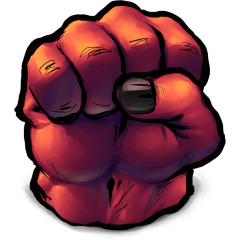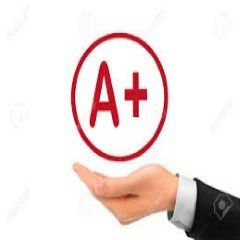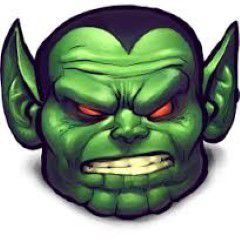MGT420 Week 5 Final Exam Complete Solution
1) Programmed decisions are useful when there is no predetermined structure on which to
rely.
A. True
B. False
2) Managers often ignore problems.
A. True
B. False
3) Bill Simmons is the manager of a small restaurant and must decide how much money he
owes his suppliers. This is an example of a nonprogrammed decision.
A. True
B. False
4) In the fourth state of decision making, problem diagnosis is linked to the development of
alternatives.
A. True
B. False
5) Choosing a ready-made alternative takes less time than designing a custom-made
solution.
A. True
B. False
6) Contingency plans are best developed following the final stage of decision
making—evaluating the decision.
A. True
B. False
7) One advantage of using a group for decision making is that one person dominates.
A. True
B. False
8) Discounting the future is said to partly explain governmental budget deficits and
environmental destruction.
A. True
B. False
9) In decision making, it is always better to use a group than an individual.
A. True
B. False
10) Which of the following does NOT describe good plans in organizations?
A. They provide a clear road map
B. They are purposeful
C. They may be formal or informal
D. They are flexible
11) The targets or ends the manager wants to reach are called:
A. Plans
B. Mission statement
C. Vision
D. Goals
12) Plans are:
A. Targets a manager wants to reach
B. Specific to differing industries
C. Inappropriate when resources are scarce
D. Actions taken to achieve goals
13) A plan which focuses on ongoing activities and may become a more permanent policy
or rule is called a(n):
A. Single-use plan
B. Strategy
C. Mission statement
D. Standing plan
14) A policy developed for the yearly graduation ceremony at Easy Town High School can
be described as a(n):
A. Single-use plan
B. Contingency plan
C. “What-if” plan
D. Standing plan
15) _____________ plans might be referred to as what-if plans.
A. Strategic
B. Contingency
C. Standing
D. Single-use
16) Coordination refers to
A. Division of labor within an organization
B. The performance of specific tasks by specific people
C. The need for specific tasks in the functional fields
D. The linking of the various components of an organization
17) An organization chart conveys all of the following EXCEPT:
A. Who reports to whom
B. How decisions are made
C. How the work is divided
D. The work performed by each unit
18) The assignment of different tasks to different people or groups is the:
A. Organization structure
B. Division of labor
C. Value chain
D. Strategic plan
19) Incremental decision making occurs when managers make small decisions and move
cautiously toward a bigger solution.
A. True
B. False
20) Managers often ignore problems for all of the following reasons EXCEPT:
A. Getting involved is risky
B. It is easier to procrastinate or to get busy with less demanding activities
C. Managers are often too busy to make decisions
D. They cannot be sure how much time, energy, or trouble lies ahead
21) Characteristics of managerial decisions include all of the following EXCEPT:
A. Uncertainty
B. Lack of structure
C. Convention
D. Risk
22) The state that exists when decision makers have insufficient information is:
A. Uncertainty
B. Probability
C. Risk
D. Certainty
23) Shakil works for a large contractor. Company policy requires that in hiring
subcontractors, at least three bids must be received and that the lowest bid which meets
specifications will be accepted. Shakil’s decisions regarding the hiring of subcontractors
would be classified as:
A. Programmed
B. Reprehensible
C. Lacking structure
D. Minimizing
24) Managers of Shadow Blinds are contemplating whether to open the company’s first
international branch in Europe or Asia. These managers are facing a _______ decision.
A. Programmed
B. Nonprogrammed
C. Well structured
D. Routine
25) The initial step in the decision-making process is to:
A. Evaluate the decision
B. Identify the problem
C. Implement the decision
D. Select an alternative
26) Once a problem is identified and properly diagnosed, the next stage in the decision-
making process involves:
A. Evaluating consequences
B. Generating alternative solutions
C. Evaluating information
D. Evaluating alternatives
27) Kathy has received two job offers. One is from a firm in a town that Kathy would like to
live in but the other offer would pay more. Kathy is having a difficult time making a
decision due to experiencing:
A. Organizational conflict
B. Psychological conflict
C. Physical location conflict
D. Internal conflict
28) The essential characteristic of great companies, according to Collins and Porras, was
their relentless focus on beating the competition.
A. True
B. False
29) Collins and Porras argue that organizations must focus on both purpose beyond profit
AND pragmatic pursuit of profit.
A. True
B. False
30) A critical characteristic of success, for all the great companies studied in Built to Last,
,was a set of common values that all the companies followed.
A. True
B. False
31) A performance gap can occur when performance is good but someone realizes that it
could be better.
A. True
B. False
32) The key to successful change is people.
A. True
B. False
33) When management realizes that its current practices are no longer appropriate and
the company must break out of its present mold by doing things differently, this is called
freezing.
A. True
B. False
34) Susan has the opportunity to either go along with her coworkers and participate in
filling out inaccurate time records OR tell her manager what is happening. This is an
example of:
A. An ethical issue
B. A situation that is not a problem
C. A time when Susan should ignore the problem
D. A moral rights issue
35) People in the ____________ stage make decisions based on concrete rewards and
punishments and immediate self-interest.
A. Principled
B. Deontology
C. Preconventional
D. Conventional
36) A situation, problem or opportunity in which an individual must choose among several
actions that must be evaluated as morally right or wrong is called:
A. An ethical issue
B. A personal issue
C. Business ethics
D. Ethical
37). Satisficing is achieving the best possible outcome.
A. True
B. False
38). Affective conflict is differences in perspectives or judgments about issues whereas
cognitive conflict is emotional and directed at other people.
A. True
B. False
39. Some experts advise that in today’s complex business significant problems should
always be tackled by groups.
A. True
B. False
40. Which is the first step in the formal planning process?
A. Goal and plan evaluation.
B. Implementation
C. Monitor and Control
D. Situational Analysis
41. Which of the steps in the formal planning process involves studying past events, examining
current conditions, and forecasting future trends?
A. Situational analysis
B. Monitor and control
C. Goal and plan evaluation
D. Alternative goals and plans
42. If expansion to Australia does not materialize, Widget, Inc.’s backup plan is to expand to Asia.
This backup plan is an example of:
A. Strategic plan
B. Standing
C. Contingency plan
D. Single-use plan
MGT420 Week 5 Final Exam Complete Solution
1) If you select a physician solely on the reputation of the physician, you are basing your decision of which of the following dimensions of service quality?
A. Service reliability
B. Responsiveness
C. Perceived quality
D. Assurance
E. Empathy
2) Which of the following is the most traditional definition of quality?
A. Features
B. Durability
C. Conformance
D. Performance
E. Reliability
3) Like engineers, operations managers are very concerned about product and process design. However, rather than focusing on only the technical aspects of those activities, operations concentrates on the __________ of these activities.
A. Management
B. Economics
C. Marketing
D. Staffing
E. Financing
4) Which of the following is not an example of a strategic content variable?
A. Time
B. Leadership
C. Quality costs
D. Generic strategies
E. Planning
5) The role of marketing in design has been to bring the voice of the __________ into the design process.
A. intermediary
B. customer
C. producer
D. raw material supplier
E. retail outlet
6) __________ is the process by which a leader influences a group to move toward the attainment of superordinate goals.
A. Planning
B. Empowerment
C. Controlling
D. Leadership
E. Organizing
7) __________ are teams that work to improve processes and customer service.
A. Tiger teams
B. Natural work groups
C. Process improvement teams
D. Self-directed work teams
E. Cross-functional teams
8) All of the activities associated with developing a product from concept development to final design and implementation is known as:
A. simultaneous engineering
B. life testing
C. concurrent design
D. process design
E. product design
9) A firm’s understanding of the customers, their needs, and their wants is referred to as:
A. internal customer perspective
B. customer conformance
C. closeness to customers
D. customer culture
E. cultural richness
10) __________ was widely accepted as the world’s preeminent authority on quality management prior to his death on December 24, 1993 because of his influence on Japanese and American industry.
A. Armand Feigenbaum
B. Genichi Taguchi
C. W. Edwards Deming
D. Philip Crosby
E. Kaoru Ishikawa
11) The major theoretical contribution of Kaoru Ishikawa was:
A. Pareto Analysis
B. his assertion that “quality is free”
C. his insight that organizational quality problems are largely the result of insufficient and ineffective planning for quality
D. the concept of benchmarking
E. his emphasis on total involvement of the operating employees in im...






Mastermind
Senior JournalistSell Your Solution Report Solution Support Center
Online Users
-
 Mastermind
Today
Mastermind
Today



A+ - Thank you!
Thanks for the positive feedback!